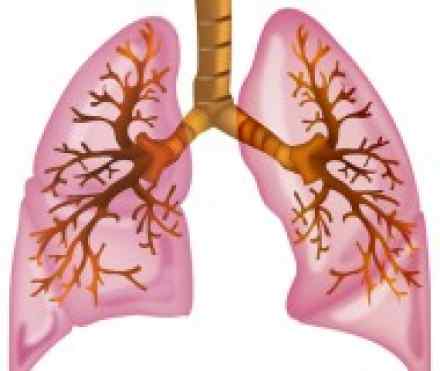
What is it?
Pulmonary embolism is a condition that occurs when one or more arteries in your lungs become blocked. In most cases, pulmonary embolism is caused by blood clots that travel to your lungs from another part of your body — most commonly, your legs.
Pulmonary embolism can occur in otherwise healthy people. Signs and symptoms can vary from person to person, but commonly include sudden and unexplained shortness of breath, chest pain and a cough that may bring up blood-tinged sputum.
Pulmonary embolism can be life-threatening, but prompt treatment with anti-clotting medications can greatly reduce the risk of death. Taking measures to prevent blood clots in your legs also can help protect you against pulmonary embolism.
Symptoms
Pulmonary embolism symptoms can vary greatly, depending on how much of your lung is involved, the size of the clot and your overall health — especially the presence or absence of underlying lung disease or heart disease.
Common signs and symptoms include:
- Shortness of breath. This symptom typically appears suddenly, and occurs whether you're active or at rest.
- Chest pain. You may feel like you're having a heart attack. The pain may become worse when you breathe deeply, cough, eat, bend or stoop. The pain will get worse with exertion but won't go away when you rest.
- Cough. The cough may produce bloody or blood-streaked sputum.
Other signs and symptoms that can occur with pulmonary embolism include:
- Wheezing
- Leg swelling
- Clammy or bluish-colored skin
- Excessive sweating
- Rapid or irregular heartbeat
- Weak pulse
- Lightheadedness or fainting
Causes
Pulmonary embolism occurs when a clump of material, most often a blood clot, gets wedged into an artery in your lungs. These blood clots most commonly originate in the deep veins of your legs, but they can also come from other parts of your body. This condition is known as deep vein thrombosis (DVT).
Occasionally, other substances can form blockages within the blood vessels inside your lungs. Examples include:
- Fat from within the marrow of a broken bone
- Part of a tumour
- Air bubbles
It's rare to experience a solitary pulmonary embolism. In most cases, multiple clots are involved. The lung tissue served by each blocked artery is robbed of fuel and may die. This makes it more difficult for your lungs to provide oxygen to the rest of your body.
Because pulmonary embolism almost always occurs in conjunction with deep vein thrombosis, some doctors refer to the two conditions together as venous thromboembolism (VTE).
Risk factors
Although anyone can develop blood clots and subsequent pulmonary embolism, certain factors can increase your risk.
Prolonged immobility
Blood clots are more likely to form in your legs during periods of inactivity, such as:
- Bed rest. Being confined to bed for an extended period after surgery, a heart attack, leg fracture or any serious illness makes you far more vulnerable to blood clots.
- Long journeys. Sitting in a cramped position during lengthy plane or car trips slows the current of blood flow, which contributes to the formation of clots in your legs.
Age
Older people are at higher risk of developing clots. Factors include:
- Valve malfunction. Tiny valves within your veins keep your blood moving in the right direction. These valves tend to degrade with age. When they don't work properly, blood pools and sometimes forms clots.
- Dehydration. Older people are at higher risk of dehydration, which may thicken the blood and make clots more likely.
- Medical problems. Older people are also more likely to have medical problems that expose them to independent risk factors for clots — such as joint replacement surgery, cancer or heart disease.
Family history
You're at higher risk of experiencing future clots if you or any of your family members have had blood clots or pulmonary embolism in the past. This may be due to inherited disorders of clotting that can be measured in specialty labs.
Surgery
Surgery is one of the leading causes of problem blood clots, especially joint replacements of the hip and knee. During the preparation of the bones for the artificial joints, tissue debris may enter the bloodstream and help cause a clot. Simply being immobile during any type of surgery can lead to the formation of clots. The risk increases with the length of time you are under general anesthesia.
Medical conditions
- Heart disease. High blood pressure and cardiovascular disease make clot formation more likely.
- Pregnancy. The weight of the baby pressing on veins in the pelvis can slow blood return from the legs. Clots are more likely to form when blood slows or pools.
- Cancer. Certain cancers — especially pancreatic, ovarian and lung cancers — can increase levels of substances that help blood clot, and chemotherapy further increases the risk. Women with a history of breast cancer who are taking tamoxifen or raloxifene also are at higher risk of blood clots.
Lifestyle
- Smoking. For reasons that aren't well understood, tobacco use predisposes some people to blood clot formation, especially when combined with other risk factors.
- Being overweight. Excess weight increases the risk of blood clots — particularly in women who smoke or have high blood pressure.
- Supplemental oestrogen. The estrogen in birth control pills and in hormone replacement therapy can increase clotting factors in your blood, especially if you smoke or are overweight.
Complications
Pulmonary embolism can be life-threatening. About one-third of people with undiagnosed and untreated pulmonary embolism don't survive. When the condition is diagnosed and treated promptly, however, that number drops dramatically.
Pulmonary embolism can also lead to pulmonary hypertension, a condition in which the blood pressure in your lungs is too high. When you have obstructions in the arteries inside your lungs, your heart must work harder to push blood through those vessels. This increases the blood pressure within these vessels and can wear out a section of your heart.
Diagnosis
Pulmonary embolism can be difficult to diagnose, especially in people who have underlying heart or lung disease. For that reason, your doctor may order a series of tests to help find the cause of your symptoms.
Chest X-ray
This noninvasive test shows images of your heart and lungs on film. Although X-rays can't diagnose pulmonary embolism and may even appear normal when pulmonary embolism exists, they can rule out conditions that mimic the disease.
Lung scan
This test, called a ventilation-perfusion scan (V/Q scan), uses small amounts of radioactive material to study airflow (ventilation) and blood flow (perfusion) in your lungs. For the first part of the test, you inhale a small amount of radioactive material while a camera that's able to detect radioactive substances takes pictures of the movement of air in your lungs. Then a small amount of radioactive material is injected into a vein in your arm, and pictures are taken of blood flow in the blood vessels of your lungs. Comparing the results of the two studies helps provide a more accurate diagnosis of pulmonary embolism than does either study alone.
Spiral (helical) computerized tomography (CT) scan
Regular CT scans take X-rays from many different angles and then combine them to form images showing two-dimensional "slices" of your internal structures. In a spiral or helical CT scan, the scanner rotates around your body in a spiral — like the stripe on a candy cane — to create three-dimensional images. This type of CT can detect abnormalities with much greater precision, and it's also much faster than are conventional CT scans.
Pulmonary angiogram
This test provides a clear picture of the blood flow in the arteries of your lungs. It's the most accurate way to diagnose pulmonary embolism, but because it requires a high degree of skill to administer and carries potentially serious risks, it's usually performed when other tests fail to provide a definitive diagnosis. It also has the advantage of being able to measure the pressure in the right side of your heart. It would be unusual to have normal readings in the presence of pulmonary embolism. In a pulmonary angiogram, a flexible tube (catheter) is inserted into a large vein — usually in your groin — and threaded through your heart into the pulmonary arteries. A special dye is then injected into the catheter, and X-rays are taken as the dye travels along the arteries in your lungs. A risk of this procedure is a temporary change in your heart rhythm. In addition, the dye may cause kidney damage in people with decreased kidney function.
D-dimer blood test
Having high levels of the clot-dissolving substance D dimer in your blood may suggest an increased likelihood of blood clots, although D-dimer levels may be elevated by other factors, including recent surgery.
Ultrasound
A noninvasive "sonar" test known as duplex venous ultrasonography (sometimes called duplex scan or compression ultrasonography) uses high-frequency sound waves to check for blood clots in your thigh veins. In this test, your doctor uses a wand-shaped device called a transducer to direct the sound waves to the veins being tested. These waves are then reflected back to the transducer and translated into a moving image by a computer. An echocardiogram of the heart can estimate the blood pressure in the right side of the heart.
Magnetic resonance imaging (MRI)
MRI scans use radio waves and a powerful magnetic field to produce detailed images of internal structures. Because MRI is expensive, it's usually reserved for pregnant women and people whose kidneys may be harmed by dyes used in other tests.
References
http://www.healthline.com/health/pulmonary-embolus
http://emedicine.medscape.com/article/300901-overview
http://www.webmd.com/lung/tc/pulmonary-embolism-medications
http://www.medicinenet.com/pulmonary_embolism/article.htm


